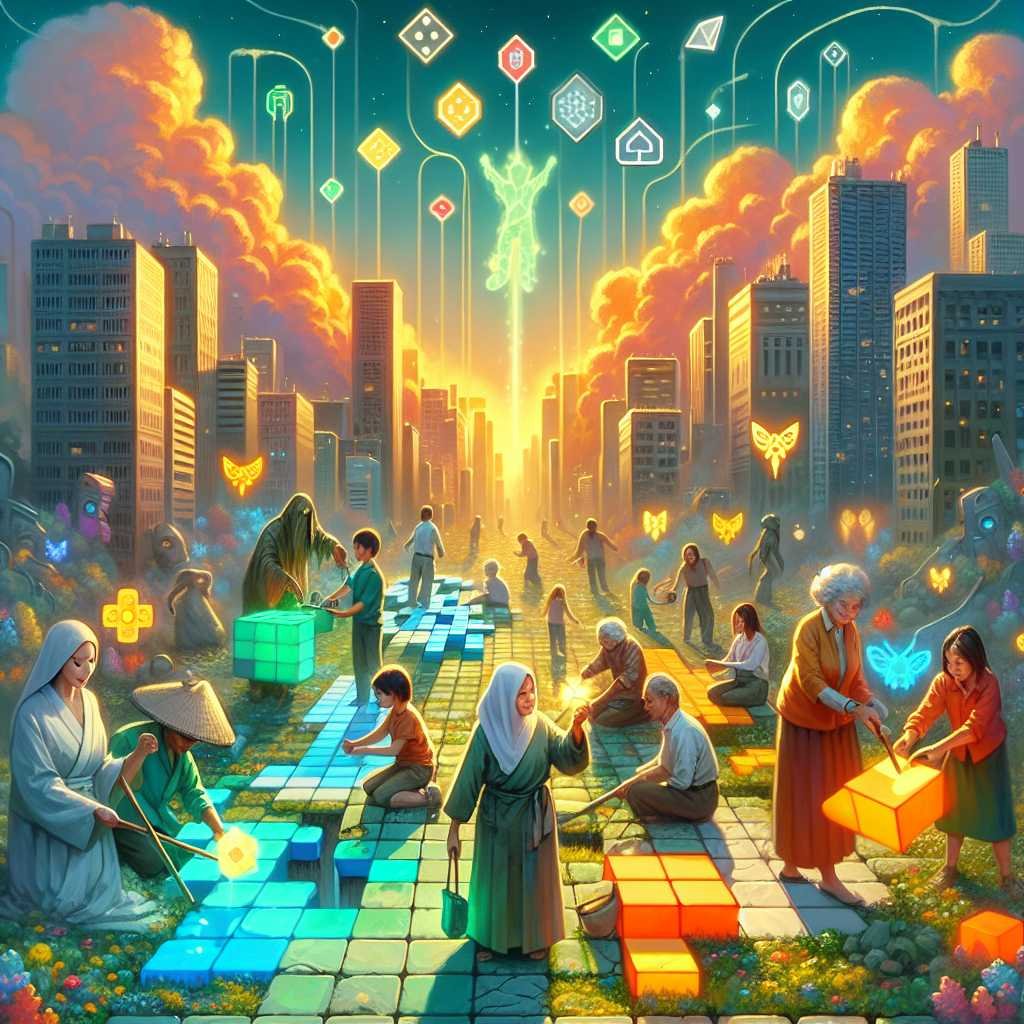Reality Is Broken Book Summary & Review: How Games Make Us Better—and Can Change the World
If you’ve ever finished a game feeling focused, hopeful, and strangely energized—and then wondered why real life rarely feels like that—you’re in the right place. Jane McGonigal’s “Reality Is Broken” argues that games aren’t just entertainment; they’re engines of meaning, motivation, and community. And if we understand how they work, we can apply their principles to fix what feels broken in everyday life.
This isn’t a niche idea. With hundreds of millions of gamers worldwide, we’re not dealing with a subculture—we’re looking at a skill set and a mindset. McGonigal’s thesis is simple but brave: games can help us design better schools, healthier habits, more resilient communities, and even responses to global challenges. Let’s unpack what she means, why the science backs it up, and how to use game design to make your life (and your team, classroom, or city) better.
Reality Is Broken: The Big Idea, in Plain English
McGonigal’s core claim is that games satisfy human psychological needs that reality often fails to meet. Great games give us clear goals, rapid feedback, a sense of progress, and “epic meaning.” They create spaces where our effort matters. That matters because, as research in motivation and wellbeing shows, humans thrive when we experience competence, autonomy, relatedness, and purpose—pillars studied in Self-Determination Theory and positive psychology.
Curious to dive deeper into McGonigal’s full argument? Buy on Amazon.
Why Games Feel So Rewarding (and Productive)
If you’ve zoned into a game and lost track of time, you’ve experienced what psychologists call “flow”—a state of deep focus and enjoyment that arises when challenge meets skill just right. Flow is known to boost performance and happiness; the American Psychological Association has a clear primer on it. Games are flow machines. They adjust difficulty, give immediate feedback, and help you see your progress—three things that real life often lacks.
Consider three evidence-backed drivers: – Competence: We like feeling effective. Games deliver levels, streaks, and progress bars that make growth visible. Self-Determination Theory, developed by Deci and Ryan, shows why this matters for motivation and wellbeing (selfdeterminationtheory.org). – Autonomy: Voluntary participation is built into play. You choose your quest and strategy—ownership boosts intrinsic motivation. – Relatedness: Multiplayer games and communities give us shared goals and recognition. Being seen and valued is fuel.
Positive psychology echoes this: wellbeing improves with positive emotion, engagement, relationships, meaning, and achievement—known as the PERMA model (University of Pennsylvania). Games naturally stack PERMA.
Want to try it yourself and see the research come alive? Check it on Amazon.
What “Gameful” Means in Real Life (and What It Doesn’t)
“Gamification” sometimes gets a bad rap because it’s confused with slapping points and badges on boring tasks. McGonigal’s approach is deeper. She uses “gameful” to mean designing real-life experiences that make us more optimistic, focused, and collaborative—without cheap tricks.
At the heart of her framework are the four classical features of games: – Goals: Clear, achievable targets shape action. – Rules: Constraints that spark creativity. – Feedback system: Data you can act on right now. – Voluntary participation: Choice, consent, and fair stakes.
When you borrow these for real life, things shift. A vague wellness goal like “get fit” becomes “walk 8,000 steps a day for 30 days,” with a smartwatch as your feedback loop and a friend as your ally. A dry training module becomes a quest with levels and immediate feedback, not a once-a-year test. Apps like Duolingo and programs like the NHS Couch to 5K show how goals, feedback, and streaks make daily practice stick.
Here’s why that matters: when your brain sees progress, it wants more progress. That’s not tricks—it’s skill-building.
From Entertainment to Impact: Where Games Are Changing the World
McGonigal doesn’t stop at personal habits. She scans across domains—education, work, health, and social impact—and shows how game design principles unlock better outcomes.
Education: Motivation by Design
Students often struggle with delayed feedback and unclear progress. Gameful learning flips that. Clear levels, instant feedback, and “fail forward” structures turn assessments into practice loops. Classroom experiments that adopt competency-based leveling and mastery badges show higher engagement and persistence. It’s not about sugarcoating; it’s about making effort visible and meaningful.
If this framework clicks for you, grab the book and mark it up: View on Amazon.
Work: Goals, Feedback, and the Joy of Progress
At work, vague OKRs and quarterly reviews are motivation killers. Teams need near-term quests, transparent dashboards, and fast feedback to stay in flow. A weekly “sprint quest” with clear acceptance criteria and visible burndown charts often beats a nebulous annual target. But heed the warning: points without purpose backfire. As Harvard Business Review notes, gamification fails when it tries to manipulate instead of motivate. Make the work intrinsically meaningful, and use game mechanics to amplify, not replace, purpose.
Health and Resilience: Leveling Up for Real
Gameful systems shine in mental health and habit formation. Micro-goals and streaks help you build momentum, while social accountability multiplies follow-through. Cognitive and behavioral interventions can extend into playful daily “quests” that reduce friction and make coping strategies more accessible. McGonigal’s later work, SuperBetter, embodies this approach—turning recovery and resilience into an incremental leveling system (SuperBetter).
There’s also improving evidence that certain games can enhance skills like attention, spatial reasoning, and working memory. The NIH has surveyed this space, including studies on action video games and cognition (NIH/PMC). Balance still matters, of course. The World Health Organization distinguishes between healthy play and problematic use.
Social Impact: From Protein Folding to Climate Foresight
“Citizen science” games invite players to solve real, hard problems. Foldit, a puzzle game by the University of Washington, has players manipulate protein structures to aid biomedical research (Foldit). In EVE Online, Project Discovery enlists a massive player base to classify real scientific data (EVE Online: Project Discovery). McGonigal’s own alternate reality game, World Without Oil, had players simulate life under an oil shock; it foreshadowed resilience strategies we’d later need in real crises (World Without Oil). That’s “epic meaning”—contributing to something bigger than yourself.
The Psychology That Powers Better Design
Let me explain what’s going on under the hood. When you design experiences with: – Clear goals, you reduce ambiguity and anxiety. – Frequent feedback, you reduce frustration and maximize learning. – Calibrated challenge, you minimize boredom and avoid overwhelm. – Voluntary participation, you protect autonomy and consent.
That combo nudges the brain toward engagement. We become less avoidant and more exploratory. With repetition, the loop builds competence, and competence builds confidence. When people feel effective, they contribute more.
Want to apply this at home, school, or work? Focus on four levers:
1) Goals that are specific, time-bound, and meaningful – Instead of “write more,” try “publish one 600-word draft by Friday 4 p.m.”
2) Feedback that is immediate and actionable – Replace vague “good job” with “this met criteria A and B; here’s what’s missing for C.”
3) Challenge that scales with skill – Hard enough to be interesting, not so hard it’s demoralizing.
4) Social support and shared purpose – Don’t solo everything. Pair up. Share progress. Celebrate wins.
How to Start Using “Reality Is Broken” in Your Life
Big changes begin with small, winnable quests. Choose one domain. Make it gameful. Build momentum.
Try these simple plays: – Make your to-do list a quest log with “XP” (experience points) for each task. Add a daily streak bonus. – Turn boring learning into a “boss battle” every Friday, where you try to beat last week’s score. – Create a “guild” with two friends for mutual accountability. Weekly stand-up, 15 minutes. Share progress bars. – For fitness, use an app that shows streaks and levels, not just steps. Reward consistency more than intensity. – For teams, publish a transparent dashboard with near-term goals and daily feedback. Celebrate small wins.
Want to go deeper, and see dozens of real-world case studies? Check it on Amazon.
Pitfalls to Avoid (So Your Gameful Design Doesn’t Flop)
- Points without purpose: If nobody cares about the underlying work, gamification looks manipulative. Start with meaning.
- Badges as bandages: Cosmetic rewards can’t fix broken processes. If feedback is slow or goals are unclear, fix that first.
- Wrong difficulty curve: Too hard kills motivation; too easy kills interest. Tune challenges weekly.
- Ignoring consent: Voluntary participation is non-negotiable. Opt-outs build trust.
- Leaderboards that shame: Public rankings can demotivate beginners. Use tiered brackets or personal bests instead.
A quick test: if your system vanished tomorrow, would people still care about the work? If yes, mechanics are amplifying meaning. If not, rethink.
Choosing Your Edition: Paperback vs. Kindle vs. Audiobook
If you’re ready to study and apply McGonigal’s ideas, pick the format that fits how you learn: – Paperback: Easy to flip, underline, and tab. Great for visual thinkers who like margin notes. – Kindle eBook: Searchable quotes, highlights, and definitions. Handy for students or researchers. – Audiobook: Ideal for commutes and workouts; pair with a notes app to capture ideas on the go.
For reference, most editions run a few hundred pages, with a brisk, example-rich style. If you’re planning to build a team workshop, consider having a physical copy for quick reference plus a digital version for search. Ready to pick a format that fits your routine? See price on Amazon.
What This Book Gets Right (and Where to Read Critically)
What lands: – Evidence-based: McGonigal leans on psychology and concrete case studies, not just opinion. – Accessible: Clear language and structure; you don’t need a PhD to start applying the ideas. – Hopeful and practical: It reframes play as a practice for resilience and contribution.
What to watch: – Overreach risk: Not every problem needs game mechanics. Some need policy, resources, or structural change first. – Measurement gaps: Long-term impact can be hard to quantify; build evaluation into your projects. – Context matters: Cultural and organizational norms influence whether gameful approaches thrive.
Read with a builder’s mindset: where could these principles help your context specifically?
A Quick Case: Turning a Wellness Program into a Game That Works
Scenario: an HR team wants to boost physical activity, but past step challenges fizzled.
Gameful redesign: – Goal: Ten-week “Energy Quest” focused on consistency, not extreme numbers. – Rules: Weekly quests include 3 x 20-minute movement sessions. Bonus XP for sleep and hydration. – Feedback: Live team dashboard shows streaks and personal bests, not a global leaderboard. – Voluntary: Opt-in with flexible modalities (walk, yoga, dance). – Epic meaning: Every milestone unlocks a micro-donation to a community health nonprofit. – Reflection: Weekly retro asks, “What made last week easier? What’s your next tiny upgrade?”
Result: higher participation, fewer drop-offs after week two, more positive spillover (better sleep and morale). The difference wasn’t trinkets—it was thoughtful design aligned with human psychology.
The Deeper Promise: Games as Practice for Agency
Here’s the heart of it. Games are where many of us practice agency—taking action, learning fast, and coordinating with others under constraints. When real life feels aimless, games remind us: progress is possible. McGonigal’s challenge is to bring that sense of agency back into the real world, on purpose.
If you lead a team, teach, or parent, this is an invitation. Structure your environment so effort becomes visible, feedback becomes faster, and meaning becomes shared. That’s how we turn “play” into progress.
Support our work and get your copy here: Shop on Amazon.
Starter Playbook: Design a One-Week Gameful Experiment
Try this minimal, high-impact sprint:
- Define the quest: “Publish one 700–1,000 word draft by Friday 4 p.m.”
- Set the rules: No email or meetings during two 45-minute “focus dungeons” daily.
- Feedback loop: After each dungeon, log word count and a one-line insight you learned.
- Calibrate difficulty: If you hit less than 300 words per dungeon, lower the bar; if more than 700, raise the challenge.
- Social support: Share your daily log with a buddy; celebrate streaks.
- Epic meaning: Tie your draft to a person it will help. Write their name at the top.
Run it for five days. Debrief for 15 minutes. Keep what worked. Iteration beats intensity.
Sources and Further Reading
- Flow and deep engagement: American Psychological Association
- Self-Determination Theory (motivation): selfdeterminationtheory.org
- PERMA model of wellbeing: University of Pennsylvania, Positive Psychology Center
- Games and cognition research: NIH/PMC overview
- Gamification pitfalls in business: Harvard Business Review
- Citizen science through games: Foldit and EVE Online: Project Discovery
- Responsible play: WHO on gaming disorder
FAQ: Reality Is Broken, Games, and Real-World Change
Q: Is “Reality Is Broken” a book just for gamers? A: No. It’s written for anyone curious about motivation, behavior change, and social impact. Gamers will appreciate the references, but educators, managers, health professionals, and parents get practical frameworks they can use right away.
Q: What’s the main takeaway of the book? A: Games meet core human needs—competence, autonomy, relatedness, and meaning—through clear goals, fast feedback, and voluntary play. If we design real life with those elements, we can boost motivation, learning, resilience, and collaboration.
Q: Does the book address the downsides of gaming? A: Yes. McGonigal distinguishes healthy, purposeful play from excessive or escapist use. She advocates for gameful design in service of wellbeing and contribution, not avoidance. For clinical concerns, see guidance from the WHO.
Q: Can gamification really improve work performance? A: It can—when done thoughtfully. Align mechanics with meaningful work, give immediate and actionable feedback, and respect autonomy. Cosmetic points and badges without purpose tend to fail, as documented by HBR.
Q: What are some real examples of games solving real problems? A: Foldit players have helped scientists model protein structures; EVE Online’s Project Discovery mobilizes players to classify real research data. Alternate reality games like World Without Oil build foresight and resilience for complex challenges.
Q: Paperback, Kindle, or audiobook—what’s best for this book? A: Pick the format that supports your study habit. Paperback is great for annotation. Kindle excels at search and highlights. Audiobook is perfect for commutes; pair it with a note-taking system to capture ideas you want to apply.
Q: How do I start applying the ideas with my team this week? A: Set a clear, near-term quest; create a fast feedback loop; calibrate challenge; and celebrate small wins. Pilot with one process for one week. Then iterate.
Final Takeaway
Reality isn’t doomed—it’s underdesigned. “Reality Is Broken” hands us a blueprint to rebuild it with the same clarity, feedback, and purpose that make games irresistible. Start small. Turn one routine into a quest with clear goals and rapid feedback. Then scale what works. If you keep designing for competence, autonomy, connection, and meaning, you’ll see the needle move—at work, at home, and far beyond.
Discover more at InnoVirtuoso.com
I would love some feedback on my writing so if you have any, please don’t hesitate to leave a comment around here or in any platforms that is convenient for you.
For more on tech and other topics, explore InnoVirtuoso.com anytime. Subscribe to my newsletter and join our growing community—we’ll create something magical together. I promise, it’ll never be boring!
Stay updated with the latest news—subscribe to our newsletter today!
Thank you all—wishing you an amazing day ahead!
Read more related Articles at InnoVirtuoso
- How to Completely Turn Off Google AI on Your Android Phone
- The Best AI Jokes of the Month: February Edition
- Introducing SpoofDPI: Bypassing Deep Packet Inspection
- Getting Started with shadps4: Your Guide to the PlayStation 4 Emulator
- Sophos Pricing in 2025: A Guide to Intercept X Endpoint Protection
- The Essential Requirements for Augmented Reality: A Comprehensive Guide
- Harvard: A Legacy of Achievements and a Path Towards the Future
- Unlocking the Secrets of Prompt Engineering: 5 Must-Read Books That Will Revolutionize You







